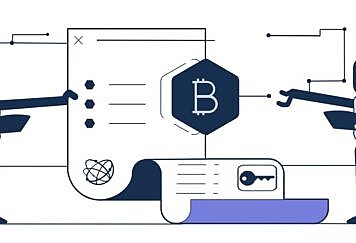Venturing into the heart of cryptocurrency’s grassroots, CPU mining stands as a testament to the origins of blockchain technology, where anyone with a computer could partake in the digital gold rush. It is the process of using processor power to solve complex mathematical problems that validate transactions and secure the network. Each solved puzzle not only fortifies the blockchain but also rewards miners with a precious slice of digital currency. This symphony of number-crunching, while seemingly straightforward, involves intricate algorithms and requires a meticulous balance between computing power, energy consumption, and the relentless pursuit of efficiency to turn silicon-driven efforts into potential profit.
Evaluating the Profitability of CPU Mining Today
In today’s digital gold rush, the allure of cryptocurrency mining persists, but the once-accessible domain of CPU mining has become a battleground where only the fittest survive. Assessing its current value proposition is akin to striking a moving target. As the complexity of mining algorithms escalates, individual miners with modest CPU setups face soaring difficulty levels that heavily impinge on potential gains. These pioneers often garner meager returns, if any, compelling us to question whether the CPU mining era is waning in the face of insurmountable odds.
| Parameters | Considerations |
| Hash Rate | A CPU’s computational power is now often insufficient against specialized hardware. |
| Electricity Cost | The Achilles’ heel of mining, high energy consumption, can quickly erode profits. |
| Cryptocurrency Market | Fluctuating values can render mining ventures profitable or futile overnight. |
| Adaptability | Newer coins tailored to CPU mining bring fleeting glimmers of hope. |
Miners must constantly pivot and adapt, casting their nets in the search for new coins that promise better yields with CPU mining. Yet, these opportunities are increasingly rare and often temporary, as other miners quickly flood in, reducing profitability to a slim margin. The informed miner’s strategy combines astute observation of market trends with a nimble approach to coin selection, yet the question remains: Is this enough to keep the CPU mining ship afloat in turbulent waters?
Energy Costs: the Deciding Factor in Mining Profitability
The relentless hum of a CPU working tirelessly might evoke the thrill of potential earnings in cryptocurrency mining, yet the constant surge of electric bills brings a sobering reality to the forefront. As miners navigate the intricate world of blockchain, they are quickly learning that their profits are intricately tied to the whims of energy tariffs. In regions where electricity comes at a premium, the dreams of lucrative returns fade, overshadowed by the sheer cost of keeping the processors running. This inescapable expense begs the essential question for enthusiasts and investors alike: is CPU crypto mining profitable, or is it a siren call towards an unsustainable practice?
Hardware Lifespan and Maintenance: Hidden Costs
As miners delve into the intricacies of setting up their rigs, the enticement of earning cryptocurrency is often shadowed by the less visible expenses. Components, especially CPUs, are subject to wear and tear over time. Optimizing for constant, intensive compute tasks can drastically shorten their operational lifespan, nudging miners towards a cycle of repair and replacement. This cycle is not only costly but also compounds the total investment, a crucial factor that often goes unaccounted for when projecting potential earnings.
Beyond the physical degradation, the maintenance required to keep a mining setup running efficiently is another cost that is frequently overlooked. Thermal paste needs refreshing, filters must be cleaned to prevent dust accumulation, and cooling systems require regular checks to avert overheating. These seemingly small tasks can accumulate to form a significant portion of the operational expenditure, eating into the thin margins of profit and, in some instances, tipping the scales unfavorably for the individual miner.
Cloud Mining: Outsourcing CPU Power for Crypto
Venturing into the realm of cloud mining offers a unique solution for enthusiasts looking to join the mining community without substantial upfront investment in hardware. This strategy hinges on renting CPU power from large data centers, enabling you to mine cryptocurrencies with greater efficiency and at scale. The key allure lies in its low barrier to entry and elimination of personal equipment maintenance. However, it’s vital to consider the transparency of cloud mining operations and the potential for lower returns due to the operational fees imposed by the service providers.
Future Prospects: Is CPU Mining a Dying Trend?
As the crypto landscape evolves, the reign of CPU mining appears to be waning. Innovations in specialized hardware, such as ASICs and GPUs, have outpaced CPU capabilities, making it increasingly harder for CPU miners to find a foothold in the competitive mining market. This reality is compounded by the emergence of new, more complex algorithms designed to be ASIC-resistant, which, paradoxically, still favor GPU rigs over CPUs. As we gaze into the industry’s not-so-distant future, it’s clear that for hobbyists and small-scale miners, the CPU mining chapter may be drawing to a close.
Despite this shift, a niche for CPU mining persists, albeit with a narrow scope. Certain altcoins and newer projects still lean on CPU-friendly algorithms, providing a glimmer of opportunity for those with modest setups. Yet, the question remains: can this sliver of the mining sector sustain itself, or will it too succumb to the relentless march of technology? Only time will tell, but for now, miners are advised to keep their expectations in check and their investments diversified.
Follow TechStrange for more!

![[100% Working] Microsoft Office 365 Product Key Free](https://www.techstrange.com/wp-content/uploads/2020/08/100-Working-Microsoft-Office-365-Product-Key-Free-60x60.jpg)



